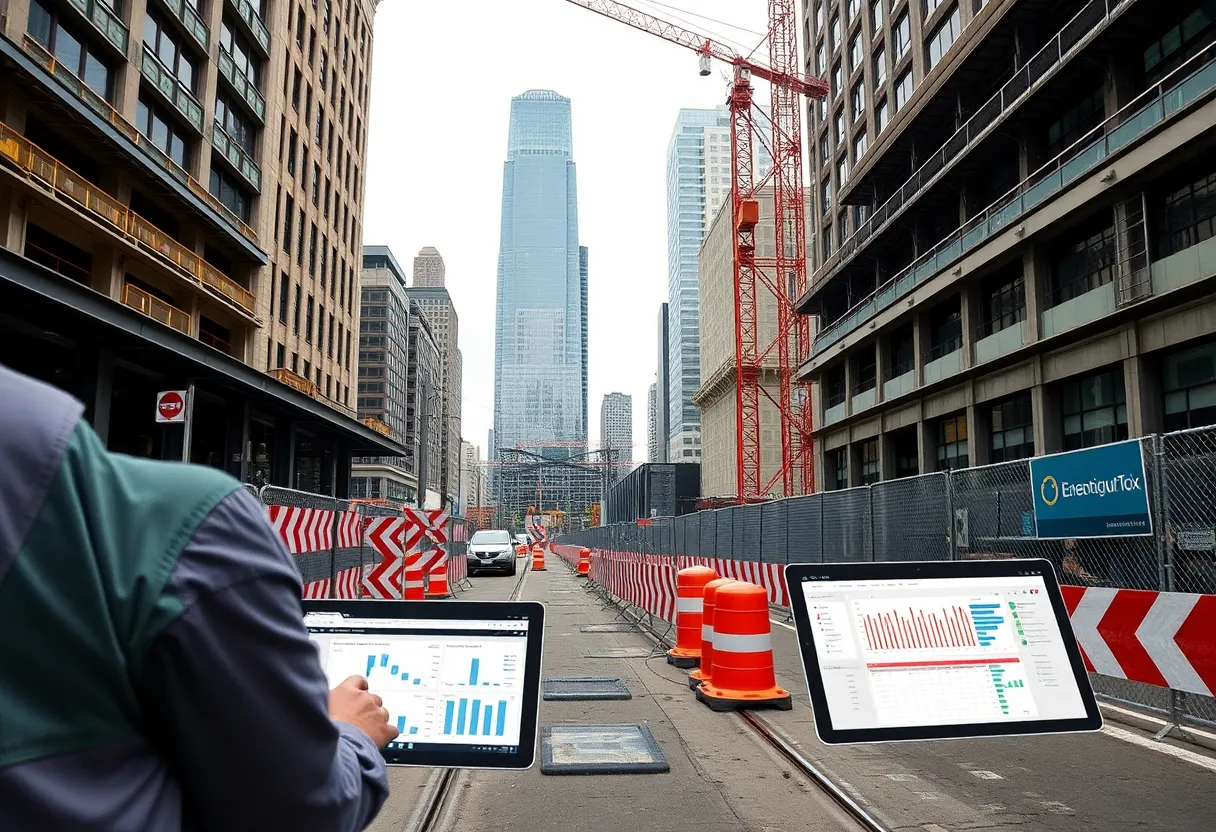Seattle, Washington, September 30, 2025
News Summary
Sound Transit staff have narrowed Chinatown‑International District station options for the Ballard Link Extension, focusing on Dearborn, 5th Avenue Shallow Diagonal, and 4th Avenue Shallow alternatives while deeming the 4th Avenue option impractical due to rail adjacency risks and higher cost and schedule. Separately, a review of project‑management tools ranked Smartsheet as the best overall alternative to Microsoft Project, with TeamGantt, monday, ClickUp and others noted for specific use cases. Builders and project leads should track BLE studies and WSLE design milestones and match tool selection to project complexity to manage schedule, cost and collaboration risks.
Toplines: Two major reviews reshape tech choices and transit plans
Two separate but consequential rounds of analysis landed this week: a widely circulated review of project‑management software and a new set of Sound Transit staff findings that refocus options for the Chinatown‑International District station in the Ballard Link Extension. The review titled 8 Expert‑Approved Microsoft Project Alternatives (Updated for 2025) evaluated eight project‑management tools and concluded Smartsheet is the best overall alternative to Microsoft Project. At the same time, Sound Transit staff narrowed practical station options for the Ballard Link Extension and signaled one of the previously considered downtown station choices appears impractical.
What the software review found
The review titled 8 Expert‑Approved Microsoft Project Alternatives (Updated for 2025) evaluated eight project‑management tools as alternatives to Microsoft Project. After evaluating the eight tools, the author(s) concluded Smartsheet is the best overall alternative to Microsoft Project. The eight alternatives named in the review include TeamGantt, monday work management, ClickUp, Wrike, Teamwork, Jira, and Airtable alongside Smartsheet.
The review notes Microsoft Project (and Microsoft Planner) offer robust project‑management functionality, including Gantt charts and task dependencies, but it adds that Microsoft Project is intended for more experienced users and requires a steep learning curve for beginners and that Microsoft Project is designed to integrate with the Microsoft ecosystem rather than with other platforms, making it harder to incorporate into workflows for teams that do not already own other Microsoft products.
The review compared each product on functionality, user interface, ease of onboarding, pricing, and integration with other applications. The reviewers signed up for the tools and tested them one by one whenever possible, using a test case and observing platform performance. The reviewers also consulted the tools’ official websites for additional information. The guide compiled a list of 8 alternatives to Microsoft Project and indicated a best use case for each.
Highlights for the leading tools
Smartsheet’s overall rating is reported as 4.81 out of 5. Smartsheet supports multiple work views including Gantt, table, board, timeline, includes a dashboard feature for viewing project status, and is described as having an intuitive user interface. Smartsheet provides onboarding resources for first‑time users, includes a sandbox feature to preview apps before deployment, integrates with Microsoft 365 and with over 100 other platforms, and uses a spreadsheet‑like interface that supports lead/lag time, dependencies, and formulas.
TeamGantt emphasizes visual timelines and Gantt charts and is rated 4.33 out of 5. TeamGantt has a drag‑and‑drop interface, allows switching between multiple views with a single click, and allows importing files from MS Project to ensure a smooth transition. monday work management is rated 4.72 out of 5 and offers highly customizable reports and dashboards, standard project functions such as Gantt charts and critical path, and five pricing options: Free, Basic, Standard, Pro, and Enterprise.
ClickUp’s rating is listed as 4.54 out of 5 and the review highlights collaboration features including Chat, task comments, Whiteboards, and Docs as well as a Free Forever plan. Wrike is noted for its integration ecosystem with over 400 integrations and includes time‑tracking features; Teamwork is highlighted for project‑budget management features such as timesheets and invoicing; Jira is positioned for software development with Agile workflows and a Free Forever plan for small teams; and Airtable charges only users who have editing access and provides core PM functions on its free tier.
The review also explains that you can import Microsoft Project files into the listed alternatives but not natively — you must first convert .mpp or .xml files to another format (for example .xlsx, .csv, or .txt) for import. The review encourages readers to subscribe to Project Management Insider for best practices, reviews and resources and says that newsletter is delivered Wednesdays and asks readers to add [email protected] to contacts to ensure newsletters hit the inbox.
Sound Transit study narrows Chinatown‑International District options
Sound Transit 3 (ST3) was approved by voters in 2016. Years after ST3 approval, Sound Transit was still studying where to put a new station near the Chinatown‑International District for the Ballard Link Extension. Sound Transit published the Draft West Seattle and Ballard Link Extensions Draft Environmental Impact Statement (DEIS) in 2022. Community uproar over potential impacts of an expanded International District‑Chinatown station under 5th Avenue South led Sound Transit to consider multiple alternative station locations.
In late 2023, Sound Transit determined that the amount of additional study required splitting two projects apart and restarted the environmental impact assessment process for BLE. Staff presented Further Studies on BLE focused on three CID alternatives being considered seriously: the Preferred Alternative of a Dearborn Street location, a 5th Avenue Shallow Diagonal option, and a 4th Avenue Shallow transit hub under 4th Avenue South.
Construction duration, costs and risks
Staff reviewed constructability and estimated construction durations for each CID alternative. The Dearborn Street and 5th Avenue Diagonal alternatives have estimated build times of 6 to 7 years. The 4th Avenue Shallow alternative is estimated at 10 to 12 years to build and was estimated in 2023 to cost over $600 million more than the proposed Dearborn alternative. Staff noted that building the 4th Avenue option would require reconstruction of the Yesler Way Bridge and demolition of the King County Administrative Building to build the tunnel to Westlake Station and on to South Lake Union.
Staff considered full closure of 4th Avenue South during construction as a way to shorten schedule and concluded that full closure would shave about 3.5 years off construction but cause especially severe traffic impacts in the CID because 4th Avenue is a major transit and freight thoroughfare. Staff commissioned an independent report from professional engineer David A. Peters to assess construction risks for the 4th Avenue alternatives. The independent assessment highlighted adjacency to the BNSF railway as a dominant construction risk and described the railroad‑related risks as substantial, unpredictable, unquantifiable, and not mitigable. Given those risks and limited additional benefit, staff concluded the 4th Avenue Shallow alternative appears impractical.
Ridership modeling and transfer patterns
Sound Transit staff modeled ridership and travel times and acknowledged that the high volume of transit choices in the Seattle core makes modeling results highly sensitive to small changes such as station access times. Modeling showed nearly indistinguishable differences in travel patterns between the three CID alternatives with slight about 1% differences in predicted weekday boardings between alternatives. For the Dearborn and 5th Avenue Diagonal alternatives, Link‑to‑Link transfers would mostly happen at Westlake Station; for the 4th Avenue Shallow alternative, those transfers would mostly happen at the ID/C Station.
Staff also observed that the Midtown station is expected to garner more boardings if the CID station is at 5th Avenue or Dearborn rather than at 4th Avenue. With the 4th Avenue alternative unlikely, attention turned to the 5th Avenue Shallow Diagonal alternative, described as having fewer construction impacts to traffic and fewer business displacements than earlier 5th Avenue designs and as having the shortest estimated construction timeline among the CID options described.
West Seattle Link Extension board action and affordability concerns
On Oct. 24, 2024, the Sound Transit Board selected the current preferred alternative as the project to be built for the West Seattle Link Extension (WSLE), advancing it in environmental review and into design. The WSLE decision had two no votes on the Board and the final vote was 14–2. WSLE would add 4.1 miles of light rail service from SODO to West Seattle’s Alaska Junction neighborhood and includes four new stations: SODO, Delridge, Avalon, and Alaska Junction. WSLE is part of Sound Transit 3 (ST3) and is forecast to carry an estimated 24,000 to 27,000 riders daily by 2042.
The Board approved a resolution to develop and implement a workplan to improve the agency’s financial situation and move WSLE through design. Staff said construction would not begin before 2027 and that construction accounts for about 86% of project funding needs. Board leaders emphasized advancing design is necessary to keep projects moving while stressing the vote was not a final commitment to build at any cost.
What happens next
For the software review, readers can expect more hands‑on comparisons and a newsletter called Project Management Insider delivered Wednesdays. For Sound Transit, staff will refine analyses, advance design for preferred alternatives that survive further review, and present findings to the board for formal decisions that will move projects into baseline budgets and construction schedules. If BLE costs escalate further, the board may face difficult choices and advocates will need to work with the CID community to shape support for alternatives such as the 5th Avenue Shallow Diagonal.
FAQ
Q: What is the title of the software review?
A: The review titled 8 Expert‑Approved Microsoft Project Alternatives (Updated for 2025) evaluated eight project‑management tools and concluded Smartsheet is the best overall alternative to Microsoft Project.
Q: Which tool did the review conclude is best overall?
A: After evaluating the eight tools, the author(s) concluded Smartsheet is the best overall alternative to Microsoft Project.
Q: Which alternatives were named in the review?
A: The article names TeamGantt, monday work management, ClickUp, Wrike, Teamwork, Jira, and Airtable among the eight alternatives.
Q: Can Microsoft Project files be imported into the alternatives?
A: You can import Microsoft Project files into the listed alternatives but not natively — you must first convert .mpp or .xml files to another format (for example .xlsx, .csv, or .txt) for import.
Q: What is Sound Transit 3 (ST3) planning history?
A: Sound Transit 3 (ST3) was approved by voters in 2016.
Q: Which CID alternatives did Sound Transit staff focus on?
A: Staff presented Further Studies on BLE focused on three CID alternatives being considered seriously: the Preferred Alternative of a Dearborn Street location, a 5th Avenue Shallow Diagonal, and a 4th Avenue Shallow.
Q: What were the estimated construction durations for the CID alternatives?
A: Sound Transit’s estimates indicated construction durations: Dearborn Street and 5th Avenue Diagonal alternatives: estimated 6 to 7 years to build. 4th Avenue Shallow alternative: estimated 10 to 12 years to build.
Q: What did the independent engineer find about 4th Avenue risks?
A: David A. Peters identified multiple construction risks for the 4th Avenue options, with the most significant being adjacency to the BNSF railway that passes King Street Station into the Great Northern Railway Tunnel; he described the railroad‑related risks as substantial, unpredictable, unquantifiable, and cannot be mitigated.
Q: What WSLE board action was taken?
A: On Oct. 24, 2024, the Sound Transit Board selected the current preferred alternative as the project to be built for the West Seattle Link Extension (WSLE), advancing it in environmental review and into design (the article cites this board action).
{
“@context”: “https://schema.org”,
“@type”: “FAQPage”,
“mainEntity”: [
{
“@type”: “Question”,
“name”: “What is the title of the software review?”,
“acceptedAnswer”: {
“@type”: “Answer”,
“text”: “The review titled 8 Expert‑Approved Microsoft Project Alternatives (Updated for 2025) evaluated eight project‑management tools and concluded Smartsheet is the best overall alternative to Microsoft Project.”
}
},
{
“@type”: “Question”,
“name”: “Which tool did the review conclude is best overall?”,
“acceptedAnswer”: {
“@type”: “Answer”,
“text”: “After evaluating the eight tools, the author(s) concluded Smartsheet is the best overall alternative to Microsoft Project.”
}
},
{
“@type”: “Question”,
“name”: “Which alternatives were named in the review?”,
“acceptedAnswer”: {
“@type”: “Answer”,
“text”: “The article names TeamGantt, monday work management, ClickUp, Wrike, Teamwork, Jira, and Airtable among the eight alternatives.”
}
},
{
“@type”: “Question”,
“name”: “Can Microsoft Project files be imported into the alternatives?”,
“acceptedAnswer”: {
“@type”: “Answer”,
“text”: “You can import Microsoft Project files into the listed alternatives but not natively — you must first convert .mpp or .xml files to another format (for example .xlsx, .csv, or .txt) for import.”
}
},
{
“@type”: “Question”,
“name”: “What is Sound Transit 3 (ST3) planning history?”,
“acceptedAnswer”: {
“@type”: “Answer”,
“text”: “Sound Transit 3 (ST3) was approved by voters in 2016.”
}
},
{
“@type”: “Question”,
“name”: “Which CID alternatives did Sound Transit staff focus on?”,
“acceptedAnswer”: {
“@type”: “Answer”,
“text”: “Staff presented Further Studies on BLE focused on three CID alternatives being considered seriously: the Preferred Alternative of a Dearborn Street location, a 5th Avenue Shallow Diagonal, and a 4th Avenue Shallow.”
}
},
{
“@type”: “Question”,
“name”: “What were the estimated construction durations for the CID alternatives?”,
“acceptedAnswer”: {
“@type”: “Answer”,
“text”: “Sound Transit’s estimates indicated construction durations: Dearborn Street and 5th Avenue Diagonal alternatives: estimated 6 to 7 years to build. 4th Avenue Shallow alternative: estimated 10 to 12 years to build.”
}
},
{
“@type”: “Question”,
“name”: “What did the independent engineer find about 4th Avenue risks?”,
“acceptedAnswer”: {
“@type”: “Answer”,
“text”: “David A. Peters identified multiple construction risks for the 4th Avenue options, with the most significant being adjacency to the BNSF railway that passes King Street Station into the Great Northern Railway Tunnel; he described the railroad‑related risks as substantial, unpredictable, unquantifiable, and cannot be mitigated.”
}
},
{
“@type”: “Question”,
“name”: “What WSLE board action was taken?”,
“acceptedAnswer”: {
“@type”: “Answer”,
“text”: “On Oct. 24, 2024, the Sound Transit Board selected the current preferred alternative as the project to be built for the West Seattle Link Extension (WSLE), advancing it in environmental review and into design (the article cites this board action).”
}
}
]
}
Key features at a glance
| Topic | Key features / notes |
|---|---|
| Smartsheet | Rating 4.81 out of 5; supports Gantt, table, board, timeline; dashboard; intuitive UI; sandbox; integrates with Microsoft 365 and over 100 other platforms; spreadsheet‑like interface. |
| TeamGantt | Visual timelines and Gantt charts; drag‑and‑drop; multiple views; imports from MS Project; rating 4.33 out of 5. |
| monday work management | Highly customizable reports and dashboards; Gantt, baseline, critical path, time tracking; five pricing options; rating 4.72 out of 5. |
| ClickUp | Collaboration features (Chat, Whiteboards, Docs); Free Forever plan; multiple views; rating 4.54 out of 5. |
| Ballard Link CID alternatives | Dearborn and 5th Avenue Diagonal: estimated 6 to 7 years. 4th Avenue Shallow: estimated 10 to 12 years and > $600 million more than Dearborn; engineer flagged BNSF adjacency as substantial risk. |
| West Seattle Link Extension (WSLE) | Board selected preferred alternative on Oct. 24, 2024 (14–2 vote); adds 4.1 miles and four stations; forecast 24,000–27,000 riders daily by 2042; construction not before 2027; construction accounts for ~86% of funding needs. |
Deeper Dive: News & Info About This Topic
Additional Resources
- WestSideSeattle: West Seattle Link Extension gets go-ahead (Federal Transit Administration)
- Wikipedia: West Seattle Link Extension
- FOX 13 Seattle: I‑5 North shutdown alternatives & routes
- Google Search: I-5 North shutdown alternatives routes
- Seattle Transit Blog: Ballard Link Extension — 4th Ave shallow is dead, long live 5th Ave diagonal
- Google Scholar: Ballard Link Extension Chinatown‑International District 4th Ave 5th Ave diagonal
- West Seattle Blog: West Seattle light rail — Sound Transit Board finalizes preferred alternative routing
- Encyclopedia Britannica: West Seattle Light Rail preferred alternative routing
- Tunneling Online: Alignment selected for West Seattle Link Extension
- Google News: West Seattle Link Extension alignment tunneling
Author: Construction CA News
The CALIFORNIA STAFF WRITER represents the experienced team at constructioncanews.com, your go-to source for actionable local news and information in California and beyond. Specializing in "news you can use," we cover essential topics like product reviews for personal and business needs, local business directories, politics, real estate trends, neighborhood insights, and state news affecting the area—with deep expertise drawn from years of dedicated reporting and strong community input, including local press releases and business updates. We deliver top reporting on high-value events such as the Rose Parade, Coachella, Comic-Con, and the California State Fair. Our coverage extends to key organizations like the California Building Industry Association and Associated General Contractors of California, plus leading businesses in technology and entertainment that power the local economy such as Apple and Alphabet. As part of the broader network, including constructionnynews.com, constructiontxnews.com, and constructionflnews.com, we provide comprehensive, credible insights into the dynamic landscape across multiple states.




